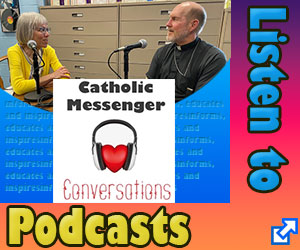
By Barb Arland-Fye
A former colleague wrote an article highlighting the uncertainty many young adults with autism and their families face when the young adult “ages out” of school.
Deirdre Cox Baker’s story in the April 16 edition of the Quad-City Times focused on a Davenport mother’s desire to form a grassroots group that would build housing specifically for autistic adults, including her 20-year-old son.
Deirdre contacted me, the mother of a 23-year-son with autism, for input about his post-high school transition. The issue is an important one to explore during this, National Autism Awareness Month, because an estimated 1.5 million U.S. residents are believed to live with autism.
While some post-high school programs exist for individuals with developmental disabilities, autism presents behavior-based challenges that can thwart participation.
Colin graduated with his high school class in 2005, but the school district provided services for one additional year in an effort to help him make the transition from school to work. Our family is grateful for that support but, as it turns out, Colin needed more transitioning time and job coaching.
I told Deirdre that once Colin left school, it seemed as if he entered an abyss. School served as his rudder, and without it he was lost. The routines and rhythms of the academic day, the stimulation of learning and interacting with his peers provided the consistency that many people with autism so desperately need.
Colin has a copy of a paper yearbook from sixth-grade whose pages were placed in sleeves inside a trapper notebook to preserve them. The pages are worn and faded from constant viewing. They bring back memories of times he apparently wants to relive.
He’s held several, part-time paying jobs, but was devastated when the first two ended because the businesses closed down. Two other jobs didn’t work out for reasons largely having to do with behavior issues and coping skills.
“Transitions in Autism,” the centerpiece of the Fourth Edition 2009 issue of Autism Advocate magazine, recognizes the challenges. The article identifies tips for guiding young adults with autism, their parents and transition team members through the post-high school transition process. Among the tips: Don’t overtax the individual’s social skills. For some individuals like Colin, too much social interaction is overwhelming; he seeks refuge in his bedroom with his books and atlases. Another tip is keeping a written schedule. Colin’s written schedule is sacrosanct; it’s his compass for daily living.
The authors acknowledge that “just coping with the mere idea of change can be problematic” and note “a tendency towards rigidity of thought and daily routine.”
Colin struggles with rigidity of thought and daily routine, but our family has begun to notice an ability to bend, to go with the flow, and that is such a blessing.
He lives in an apartment with a roommate and now volunteers for the organization that provides him with daily supervision and self-sufficiency building skills. He loves the part-time volunteer work, which seems to give him a sense of purpose.
Today, my younger son Patrick and I noticed that Colin seemed more energetic while playing sled hockey and happier when we went out for dinner afterward, even though his dad couldn’t be with us. None of us this side of heaven knows what the future holds during our time on earth. But my hope and prayer is that more of us will be companions on the journey. It makes uncertainty more bearable.








